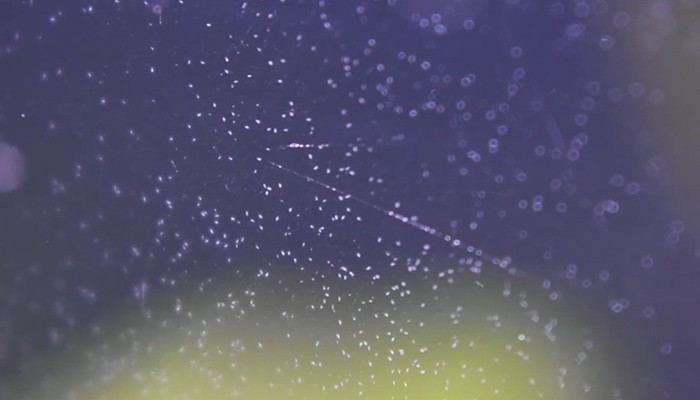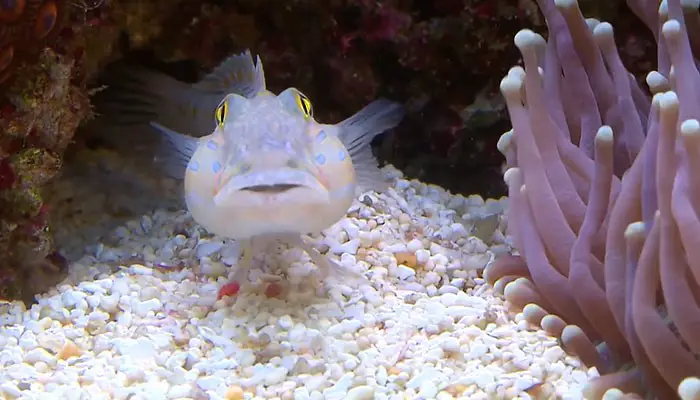
If you are on this site then you must own a fish aquarium or saltwater reef tank for a long time and now you are noticing some tiny white moving dots in the aquarium. Therefore, you are wondering what they could be and how did they enter!
Also, you must be worried if these creatures are harmful to the fish or corals of your aquarium. Well, don’t be too shocked if you actually find these white tiny mites slaying around inside the tank water.
You can say it is a common sight and most of these creatures are harmless. But sometimes the critters might turn into a threat to your aquarium fish or shrimp.
So, you need to get rid of these pests, right? Well, let us help you with everything you need to know regarding this topic.
What Are These Tiny White Moving Dots In My Aquarium?

The tiny moving dots in the fish tank are either amphipods or copepods. Many biologists have stated them the creatures of Crustacea class. It is very normal that just because you own an aquarium does not mean you will know every possible thing that can take place inside the water.
However, there are some natural processes along with some progressions that might occur in the aquarium. The tiny moving bugs are just the result of some. These organisms are more likely to survive in the wild environment.
Nonetheless, they can live in a confined aquarium as well. Biologists also acknowledge them as super-tiny shrimp. They are noticeable only at their larval stage. Gradually during their adulthood, these creatures tend to hide in the deep level of the substrate.
How Do They Enter the Aquarium?
Well, it might seem that there is no way these organisms enter the aquarium. Whereas, they have to come from somewhere because obviously they are not automatically produced in the tank water.
So, from where these critters may come? Well, it has been proved that these tiny white moving dots come might be transferred through any substrate, plant, or aquarium decora. Even they can take place through several invertebrates or fish in the tank water.
Copepods, in fact, can be found in almost all aquatic systems be they freshwater or brackish, or marine. But you will find most amphipod species in saltwater. However, some species remain in freshwater or terrestrial as well.
Are These Tiny White Moving Dots in Aquarium Dangerous to Fish?
There could be a thousand pods among the marine species. But among them, only a few shows carnivorous or parasitic traits. Also, these pods rarely counter in marine water let alone in aquarium water.
However, for your information, copepods are detritivores. That means the critters are partly beneficial to the ecosystem inside the tank environment. For being an ideal food for small fish, some aquarists themselves raise colonies of these critters to serve the young fish to grow fast.
Moreover, these pods are algae-eaters. They also eat up things in your aquarium that you do not want. Therefore, if the tank conditions approve, they start to reproduce. So, the tank animals can eat the eggs as well. The food is proven a nutritious source for fish.
But unfortunately, in some cases, these pods might act harmful to the aquarium fish. There are chances that the excessive appearance of the copepods or amphipods can bring diseases to aquarium fish. Sometimes, the infection might get out of control.
How to Remove These Tiny White Moving Dots from My Aquarium
To speak the facts, most experienced aquarists know that copepods and amphipods will do good things involving the aquarium ecosystem. The thriving population of the pods is a great source of food and nutrition for the tank animals.
Thus, you do not necessarily get rid of them. Yet, if you do not like these pods roaming inside the tank water then yes, you can remove them. In this case, you have to ensure proper nutrition for the aquarium fish.
1. Cleaning of the Aquarium Water
We have already mentioned that the white moving dots that are mostly known as pods live on eating detritus in the aquarium. Therefore, cleaning the detritus will reduce the amount of food that is going to get the copepods and amphipods.
Nonetheless, routine clean-up and maintenance are important. If the water in the tank remains uncleaned for days, then the water conditions will be more susceptible to the pods.
Hence, to destroy the population of copepods and amphipods, changing the aquarium water frequently is important.
Tips
- When you go for a water change, you can stir up the substrate in the tank by using your finger. Then while siphoning deals with the underlying detritus by kicking them up.
- You can also use a light trap to get rid of this problem while obtaining a water change. Just ensure a flashlight is in one area of the water tank. The light will attract the pods in one place. Eventually, you will find a cluster of pests around the place. So, when the pods gather, remove the population by siphoning.
2. Add Pod Eaters

If your tank animals do not eat up the pods then adding some pod eaters in the water might help you with this matter. There are some small fish that will love to hunt the copepods or amphipods inside the tank.
Fish like guppies, tetras, and rasboras eat up the pods if they find them in their way. However, larger fish barely notice these pests in the water let alone eat them.
Again, if you are an experienced aquarist then we can suggest you some predators you can keep in the tank. The predators are not suitable or ideal for beginners out there as they are high maintenance and require frequent care.
Moreover, the fish in the list we are going to provide requires a huge deal of pod population for their food. So, if your tank aquarium is fully infested with the pods and you are an experienced hobbyist then see which ones you will get for your tank,
- Sand-sifting gobies
- Mandarin fish
- Angelfish
- Firefish
- Crabs
- Shrimp
- Seahorses
- Wrasse
Except for fishes, several coral species feed on plankton and its by-products. So, you can also keep some small soft corals or polyp stony corals as well to prey on the pod colonies in your aquarium.
3. Feeding the Aquarium Animal Properly
Supplying excess food in the fish tank will only increase the population of the pods. The copepods or amphipods will take advantage of the excess or uneaten food.
Again, if there is an overpopulation of the pods then they will compete for the food as well. Hence, professionals suggest offering less food in the tank. It will ensure that the water mites do not get any food for thriving.
4. Using Canister Filter
Well, sometimes when these critters produce a densely population, they start to irritate the tank animals in several ways. The critters crawl on the skin of the fish in the free-swimming stage of their life and irritate the fish.
As a result, the fish are found their body scratching against the objects in the tank. Or, you can also find the fish shaking their body in response to the annoyance the water mites cause.
In such situations, you want to rescue your fish. So, in conditions like this, you can also use a canister filter that is featured with the HOB style. Canister filters are the best when it comes to any chemical, biological, or mechanical filtration.
Moreover, canister filters are mostly designed with an extremely fine pleat cartridge sometimes, also known as a fine micron sleeve. Once you install this device in a fish tank or aquarium, it will filter all the probable mites that have entered inside. Moreover, the filter device is very quick and easy.
So, these are some probable solutions you can take up to remove or get rid of the moving pods in your aquarium.
How to Prevent the Tiny White Pods from the Tank
Yes, there are certain chances to prevent or decrease the chance of the pods entering the aquarium. There are basically two ways recommended by professionals to prevent the tiny mites from the tank.
Quarantining
Quarantining is the best way to prevent any potential water pests, diseases, bacteria, or harmful chemicals in the tank water. In this process, the plants and other goods like decors, any substrate, or hardscape are kept in another container or a tank where there will be no fish.
After some days of being quarantined all the plants and objects should go back to the tank where you want to keep them.
Bleach Dip
Bleach dip is another best way to prevent any pests, diseases, or bacteria to enter the water. This method can disinfect the decors and plants before placing them inside the tank water. However, while obtaining this method make sure that the dipping time period does not cross 90 seconds.
Bleach dipping for a longer time might act oppositely to the plants or any objects in the tank. Therefore, you have to be very careful with the process. Nonetheless, knowing the steps properly can save you from any mistakes.
An Information You Need to Know
Once these water mites reach adulthood, they are more likely to disappear or hide. The free-swimming pests become more harmless in their adult stage. In that stage, they tend to hide in the crevices of the live rocks or any substrates.
So, if the bugs are not overly populated in the water, then you can just simply leave them undisturbed. thus, also letting nature do its job of dealing with these bugs.
Conclusion
Now you must know what are these tiny white moving dots in your aquarium. You also know that they are quite harmless and sometimes play a good role in the fish aquarium or reef tank.
However, you might not like them swimming along with your beautiful fish. Thus, you are allowed to clean off the bugs from the water. For that what to do we have already mentioned above.
So, if this article was helpful enough to know everything regarding the pods you were not acknowledged before then let us know with your feedback. We will answer any queries as well.
- Top 15 Freshwater Aquarium Plant Ideas for a Lush, Green Tank - November 9, 2024
- Top 13 Freshwater Aquarium Layout Ideas for a Beautifully Organized Tank - November 9, 2024
- 14 Stunning Rustic Freshwater Aquarium Ideas for a Tranquil Environment - November 9, 2024
